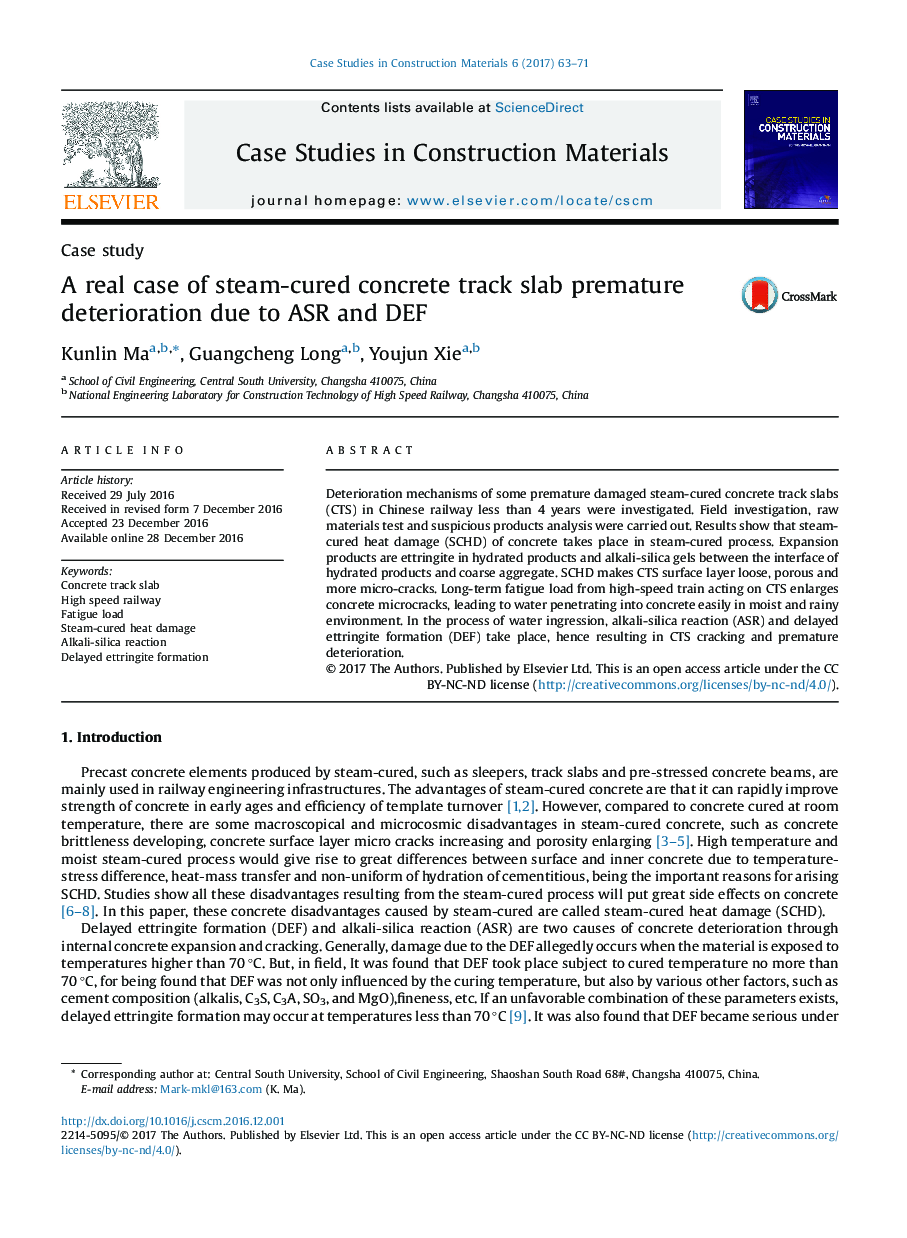| Article ID | Journal | Published Year | Pages | File Type |
|---|---|---|---|---|
| 4911599 | Case Studies in Construction Materials | 2017 | 9 Pages |
â¢Premature deterioration mechanism of steam-cured concrete track slab was investigated.â¢Steam-cured heat damage (SCHD) makes track slab concrete surface layer loose, porous and more micro cracks.â¢3.Long-time dynamic load and moist environment acting on track slab enlarges micro cracks and results in water penetration into concrete easily.â¢Ingression of water into concrete causes the formation of alkali-silica gel and delayed ettringite.
Deterioration mechanisms of some premature damaged steam-cured concrete track slabs (CTS) in Chinese railway less than 4 years were investigated. Field investigation, raw materials test and suspicious products analysis were carried out. Results show that steam-cured heat damage (SCHD) of concrete takes place in steam-cured process. Expansion products are ettringite in hydrated products and alkali-silica gels between the interface of hydrated products and coarse aggregate. SCHD makes CTS surface layer loose, porous and more micro-cracks. Long-term fatigue load from high-speed train acting on CTS enlarges concrete microcracks, leading to water penetrating into concrete easily in moist and rainy environment. In the process of water ingression, alkali-silica reaction (ASR) and delayed ettringite formation (DEF) take place, hence resulting in CTS cracking and premature deterioration.
